Recent Posts
Top Tips for Preparing for Floods | SERVPRO of Fayetteville
5/20/2024 (Permalink)
 Are you left with the aftermath of floodwater damage? Don't hesitate to contact SERVPRO of Fayetteville. We want to help.
Are you left with the aftermath of floodwater damage? Don't hesitate to contact SERVPRO of Fayetteville. We want to help.
Flood conditions can develop quickly and can lead to serious situations that can even be dangerous if you aren’t prepared. Flash floods are actually more common than you think and could affect us at a moment’s notice here in Fayetteville.
Knowing what to do before, during and after a flood can help you navigate this frustrating disaster situation with more confidence. Check out our tips below to learn more.
Getting Ready
Pay attention to the daily forecast and especially if there are any alerts or watches being issued. Keep in mind that flash flood watches and warnings can be issued even if it is not raining yet.
If an alert is issued for our area, start getting your home ready right away. Tidy up your yard by removing yard debris, children’s toys and lawn equipment. Tie down any heavy objects that can’t be moved inside, like patio furniture or trampolines. Believe it or not, just a few inches of fast-moving water can sweep away even heavy items such as these.
Set up your downspouts to point away from your home, and head inside to locate your emergency kit. Edit or add anything that you may need, and consider filling up some reusable bottles of fresh water just in case.
Flooding situations can sometimes impact our fresh water supply and the taps may not be safe to drink from for a while after the flood.
What to Do Afterward
If water does start flowing into your home, do your best not to panic. We know that it can seem scary to see water fill up your basement or watch it leak down your walls, but the only thing you should do at that moment is stay above the water line and wait for the storm to pass.
As soon as the threat is over and water has stopped rushing in, move carefully about your home. Even just a small amount of standing water can have a significant impact on your home’s structural integrity.
Avoid walking through the water because it could be harboring all kinds of dangerous things. Chemicals, storm runoff, sewage and other hazards in the water could make you really sick if you come into contact with them.
Recovering After a Flood
Take a walk around your property and identify any damage by taking photos. These pictures are a crucial part of your insurance claim as we will want to get started on your restoration right away. Fresh images will help ensure you are getting as much out of your claim as possible.
Our team will get right to work removing the standing water while also using our thermal cameras to detect hidden moisture if the flood water leaked behind your walls or under your floors.
Our specialized equipment will get every drop, don’t worry! Standing water can also warp walls and ruin carpet and ceilings. Our restoration team will tackle these repairs for you as well so you can recover completely.
A quick flood restoration is essential. Contact us 24/7 if your home is damaged by floodwater.
The Speed of House Fires | SERVPRO of Fayetteville
5/14/2024 (Permalink)
 No matter how great the damage is, SERVPRO of Fayetteville is Here to Help® you restore your property to preloss condition.
No matter how great the damage is, SERVPRO of Fayetteville is Here to Help® you restore your property to preloss condition.
The unexpected nature of house fires is something that we all tend to fear. A fire could break out at any moment due to a faulty wire or an unforeseen problem with an appliance like your dryer. In any case, house fires can grow exponentially in minutes and can become life-threatening situations just as fast.
Getting out of your house during a house fire should always be your top priority, so having a plan in place to exit your home and reconnect with your family outside is crucial.
Our team explains more below about how quickly fire spreads and how we can help once you are out safely, so read on to learn more.
The Minutes That Matter
House fires can be caused by a variety of factors and can range from a true accident to negligence around a flame in the kitchen or a forgotten candle. No matter how the fire starts, it can quickly grow to take over your entire room or home in a short amount of time.
After 30 seconds: The small flame grows into a large fire that starts to consume combustibles around it.
After one minute: Black smoke begins to build, and the cloud fills the entire room.
After two minutes: Blackout conditions can occur, and the toxic fumes can disorient you.
After five minutes: Your entire home could be consumed by the flames.
Responding to a Fire
If you are in the room when a fire breaks out, you have the option to stay and fight the fire if you feel comfortable doing so. Throwing a pot lid over a grease fire or sweeping your fire extinguisher across the flames can help control the situation. However, if you ever feel unsafe at any point, back away and find the closest exit.
If you are in an interior room and can’t get out immediately, stay low to stay below the smoke line and crawl if you have to. Even just one deep inhale of that smoke can leave you dizzy and confused, which can make it really hard to find the exit. Once you are safely outside, call 911 and meet up with your family.
The Recovery Process
You are probably running on adrenaline throughout the entire process, but once the fire is out and the fire trucks drive away, that feeling will fade and you will be left to deal with the aftermath. However, SERVPRO of Fayetteville is here to ensure this disaster becomes only a memory for you.
Our fire damage restoration team is trained to handle any sort of fire damage situation and we will work hard to clean, sanitize, restore and repair every inch of your damaged home. We can rebuild entire rooms or sections of your house, and we can ensure the soot and lingering smoke is taken care of quickly. No matter how your fire started, our team will take care of you.
SERVPRO of Fayetteville is here for you day and night. Call us for immediate fire damage restoration assistance.
The Risks Associated With Storm Damage | SERVPRO of Fayetteville
2/20/2024 (Permalink)
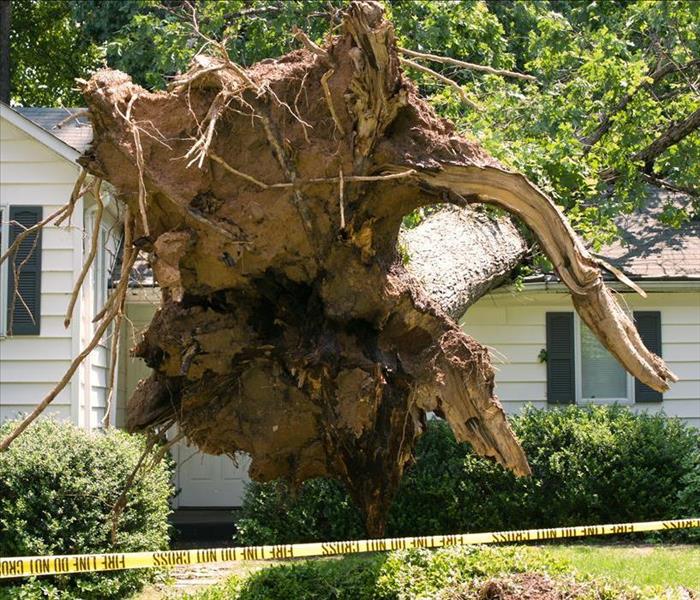 Has your home been hit with major storm damage? Call SERVPRO of Fayetteville now. We are here for the rescue!
Has your home been hit with major storm damage? Call SERVPRO of Fayetteville now. We are here for the rescue!
Suffering home damage during a strong storm can be frustrating, scary and even dangerous while the damage is occurring. One minute you are hunkering down safely and the next you are bracing yourself for a fallen tree or a straight line wind that has whipped through your now-broken windows.
While we can’t always prevent storm damage from happening, it is important to respond quickly after the fact. The longer you wait to address damage, the worse it can get and can even lead to further structural concerns throughout your home.
The Impact of Wind
The wind can really pick up in our area and can range anywhere from a soft breeze to a dangerous straight line wind that clocks up to 100 miles per hour or more. Sudden bursts of strong wind can level buildings and cause significant damage in just a few seconds.
Even moderate wind speeds can pick up yard debris or some of your forgotten possessions in your yard and turn them into projectiles. Patio furniture, trampolines and even cars can be overturned and tossed into the side of your home.
Once the wind damage has occurred, it is possible for water damage to occur as well! If the rain is still falling and your home is exposed to the elements, things can go downhill pretty quickly for you.
The Impact of Water
Rain can be really troublesome for homes, especially if you have already suffered structural damage. It can leak through your home via gaps and cracks and seep behind walls and under floors. Over time, this lingering moisture can even lead to stubborn mold infestations.
If your home has suffered some sort of impact damage and the rain begins to soak your possessions, you could find yourself dealing with widespread water issues all over your home. The water can soak carpets, seep into upholstery and ruin important documents.
Where Our Restoration Team Comes Into Play
Suffering storm damage is frustrating on its own, but when it starts to lead into other damage situations like water or mold growth, acting quickly is key. That’s where we come in!
We know that the longer damage sits, the worse it can become. We get started as soon as you call us to help prevent this from happening.
We will get right to work securing the rest of your home to prevent further damage, so we will tarp over ruined parts of your roof or board up windows while we get to work. Our water damage restoration team will extract standing water and hidden moisture, and our reconstruction crew will start working on your structural repairs as well.
We are a full-service construction company, which means that you will only ever need to work with us to tackle your entire restoration! You can lean on us after suffering storm damage because we will take care of you and your home with confidence.
Storm damage comes in all shapes and sizes. Contact SERVPRO of Fayetteville for a fast restoration.
3 Ways to Protect Your Home From Water Damage | SERVPRO of Fayetteville
11/20/2023 (Permalink)
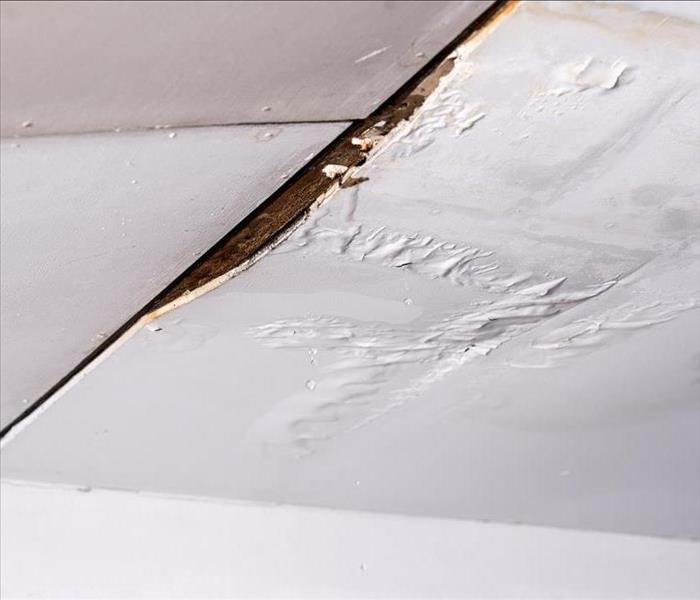 Suffering from home water damage is no way to live. Call SERVPRO of Fayetteville today! We are here to help.
Suffering from home water damage is no way to live. Call SERVPRO of Fayetteville today! We are here to help.
Suffering a water disaster is overwhelming no matter how it happens. Even just a small amount of water can have a huge impact on your home. Water disasters are one of the most common home insurance claims, so it is important to know how to reduce your risk as much as possible.
Water leaks can happen anywhere, but these three locations are often where they start! Check these places often and perform routine maintenance tasks to stay as dry as possible.
Check Your Plumbing
Leaks behind your walls can be hard to spot, especially if they are occurring behind your walls. Check all pipes leading from your faucets, sinks and tubs often for drips or signs of wear and tear. Even a simple deteriorating line of caulk can invite water to sneak out of a pipe or water line, which can quickly get worse.
Water is constantly flowing to and from your home behind your walls and under your floors, so investigate any new dripping sounds or the sound of running water in any room. A single clogged drain can easily block up a pipe and lead to a watery mess somewhere in your home.
Keep Gutters Clean
Keeping your gutters clean is another reliable way of preventing significant water damage. Heavy rain can easily overwhelm a clogged gutter system, which will force the water to back up onto your roof or pour over the side of your home.
Even the smallest gap can invite water into your home, or your foundation may become overwhelmed and water will start to flow into your basement.
Grab a ladder and a buddy and get to work! Routine cleanings are important, especially after a particularly strong storm or during the fall season when all the leaves are making their way to the ground. Remove as much debris as possible and be sure your downspouts are pointed away from your home.
Check Your Roof
Another important water damage prevention task is to check your roof often for signs of damage. Obvious impact damage due to a fallen tree during a storm will be easy to spot, but oftentimes it's the damage that goes unnoticed that can cause serious problems over time.
Missing or broken shingles, gaps along your roofline or sagging of any kind can invite rain into your attic that could leak down your walls. Address any repairs yourself or have a professional come out to help you seal your attic back up again.
Suffered water damage? Call SERVPRO of Fayetteville right away.
General Building Maintenance Saves Money
2/11/2021 (Permalink)
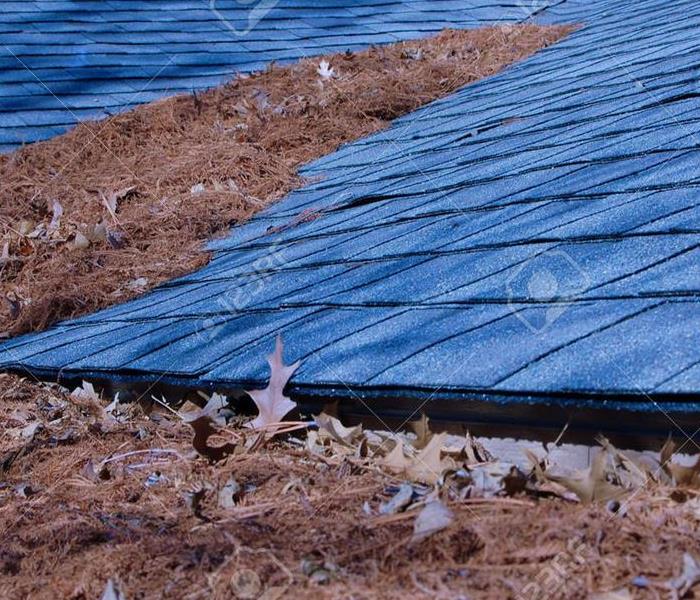 Maintain Buildings Leave on a Roof
Maintain Buildings Leave on a Roof
Time, use, material quality, and workmanship are determining factors in how long a material will last. Replacing worn items may reduce or eliminate additional expenses.
For example, resulting wind, sun, and inclement weather determine the useful life of shingles. Basic maintenance such as removing debris (straw, leaves, etc.) from a roof can extend shingle life. Damaged or worn shingles may allow water penetration, damaging roof components, or interior materials. A general inspection does not require walking the roof. Standing on the ground look for lifted shingles, missing shingles, or nails protruding through shingles. These are signs maintenance and/or replacement is required.
A hot water heater's useful life can be extended through maintenance. Draining a hot water heater to remove settled particles and residual minerals may prevent premature failure. Observe the outer general appearance. Are there rust stains around the tank base, are the fittings (pipe) rusting, or do they appear to be leaking?
Replacing HVAC filters routinely and annual servicing may extend the HVAC mechanical components. If visible darkening is visible around supply vents the system may require cleaning.
Observe carpeting, vinyl composite tiles, ceramic tile, and laminated vinyl flooring. Are there signs of wear or exposed raised areas creating a tripping hazard? Inspect for areas susceptible to frequent use or exposure to moisture. Moisture, wear and tear, and workmanship is factors when determining when to repair or replace. Tripping hazards are a common source of injury.
Lighting in transition areas may create a fall or tripping hazard. Are stairwells well lighted? Lighting may be installed in difficult-to-reach areas requiring a professional to replace light bulbs. Contact a professional if you are unable to safely replace.
the longer these factors continue the easier it is to overlook or not see them until it is too late. Train yourself to watch and act to prevent accidents and additional costs for maintenance and repairs.
SERVPRO of Fayetteville is here to help.
Why is there Mold in Your Home?
2/11/2021 (Permalink)
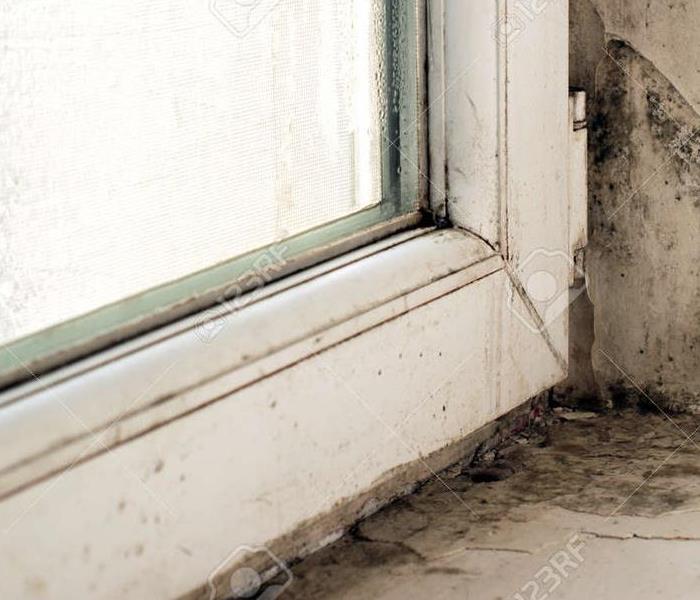 Mold Growing in Damp Drywall
Mold Growing in Damp Drywall
Mold is ubiquitous, meaning it is always present and a part of the fungal ecology necessary for life. When present the goal is for it to be in balance. What does this mean? The most common comparison is outside conditions compared to inside occupied buildings. When a mold exists outside and it is either not inside or is closely aligned with interior presence it is considered normal or in balance. This does not apply when individuals are immunocompromised or business processes require better indoor air quality. Contact a company to request mold testing. SERVPRO of Fayetteville can assist you with testing services. Services include air sampling and surface sampling using specified procedures and testing supplies.
In general, mold has three requirements to reproduce. 1. Food 2. Range of temperature 3. Moisture. Of the three requirements water is the easiest to control. Mold can process a wide variety of materials (paper, wood, bio-film, food, biodegradable materials) into a food source. Mold is adaptable to a wide variety of temperatures. Especially considering the interior temperature is controlled to accommodate occupants. The remaining requirement, water, is the easiest to control. A three-legged stool is one example of a method in controlling mold growth. If each leg is one of the requirements, and one of the legs is removed the stool falls. The leg representing moisture is the one to remove.
A few tips to prevent excess moisture are to remove and dry water from floor surfaces, exhaust air from bathrooms, kitchen, laundry room, observe appliances (ice maker, washing machine, and dishwasher) to detect slow leaks, and check rooms used infrequently. Rooms used infrequently allow additional time for moisture present to promote mold growth. Leave doors open to areas not in use to allow air movement.
SERVPRO of Fayetteville is trained and qualified to assist you with safe mold removal.
Storms Do Not Require a Name
2/11/2021 (Permalink)
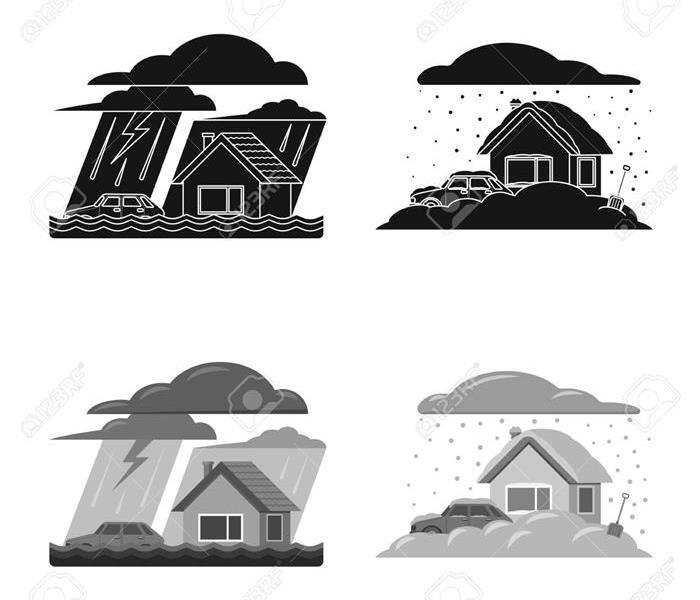 Weather Affects Buildings
Weather Affects Buildings
How many ways are weather forecast broadcast? Weather forecasters have become celebrities appearing in the midst of real, and not so real, storms defying the odds of physical harm. Radio, newsprint, television, a plethora of online outlets, smartwatches, spouses, and spouses' parents are valued weather resources.
My grandmother was before her time inventing the doppler radar concept in the early '70s. "Fortunately" we lived in an area where we centrally located between three television stations (when the antenna was aligned correctly) observing the weather forecast at varying times. By watching the weather reports back-to-back she formulated our local weather forecast. More recently forecasters present information days if not weeks in advance. Weather forecast for the East Coast often focus on hurricanes and projected rainfall, wind, and damaging effects. Bread, milk, and sugar fly off the grocery store shelves. Winter-time brings a forecast of snow, ice, and mixed precipitation. Anyone visiting or having recently moved to a southern region should be acutely aware Southerners drive very poorly during any wintertime-related weather inconsistencies, and during a hurricane are bound and determined to drive around before, during, and after the hurricane.
Frequently weather events occurring in relatively small geographical areas are not broadcasted leaving property owners and property managers to observe weather conditions and resulting effects on buildings.
A roof requiring maintenance or replacement before a storm may leak allowing water to affect the building's interior. Attic insulation, ceilings, walls, and personal contents may be affected.
Low lying buildings may experience flooding into the building or when a crawlspace is present the crawlspace may flood. A crawlspace is an area below when the building floor is elevated above ground level. Crawlspaces may be utilized for HVAC ducting and HVAC, plumbing, and electrical components. Insulation placed beneath the floor is also in the crawlspace. the materials may be affected by rising water.
Freezing temperatures may lead to burst plumbing and water damages. Remember to protect plumbing fixtures and plumbing to prevent damages.
When a building is affected by severe weather SERVPRO of Fayetteville can assist to reduce additional damages and mitigate existing damages.
What Happens After a Fire
2/4/2021 (Permalink)
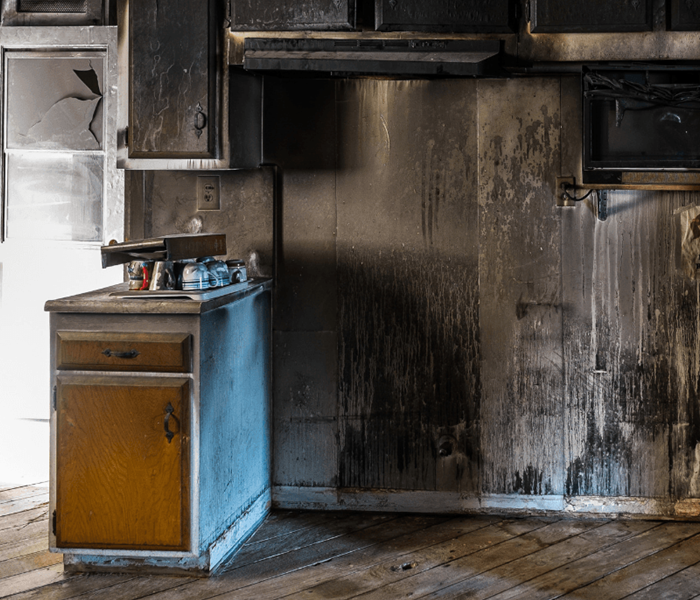 Damage Resulting From Fire
Damage Resulting From Fire
Often after a fire, there is a noticeable odor and structure and contents appearance. The sights and smells can be overwhelming and the feeling something needs to be done can be overwhelming. This is where a thoughtful reaction can save time and money. SERVPRO of Fayetteville is trained to respond to and restore your home or business to a preloss condition.
If emergency services by fire and rescue are required SERVPRO of Fayetteville will begin services once access is permitted.
The number one priority is safety. Certain hazards may be present. Individuals entering the structure and see what has happened should be aware of the damages and how this may have affected the structure. Overhead objects (ceiling, fixtures) may be compromised as well as flooring stability. Air quality may have been affected by the fire and resulting methods to extinguish the fire. Respiratory protection may be required in the initial stages of cleaning and deodorization.
If the structure is safe to enter and cleaning and deodorization services have not begun there are a few tips to observe to prevent additional damage. SERVPRO of Fayetteville can provide a brochure with the following information in addition to other suggestions for water, vandalism, and harmful waste suggestions.
*To prevent affecting areas not affected by the loss limit movement. Soot and affected water can be tracked throughout the house. *If electricity is turned off, prop open freezer and refrigerator doors. *Turn off HVAC system. This can prevent spreading soot throughout the house. *Wear disposable gloves to prevent transferring soot to other surfaces. *Certain methods are required for washing walls. SERVPRO of Fayetteville will provide this service. *Do not consume food products as they may be contaminated. *Contact your pharmacist concerning medications before taking. *Wash clothing or send to laundry. There are specific methods for cleaning and deodorizing textiles.
SERVPRO of Fayetteville is trained and prepared to assist with any size fire loss.
What is Clean
2/4/2021 (Permalink)
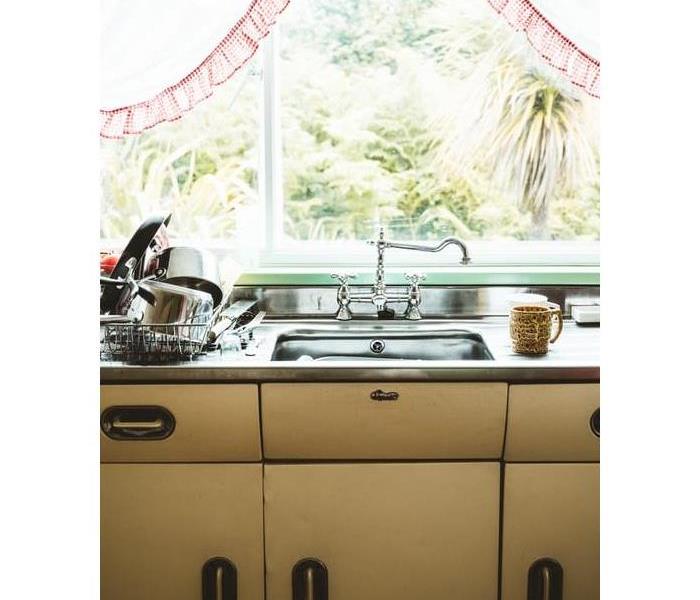 A Clean Kitchen
A Clean Kitchen
The requirement for clean depends upon the end-user, or customer. A homeowner may require one type of clean and a business may require a different one. Individuals wishing to maintain a clean home or business may have different needs.
Additional information concerning cleaning, disinfection, and sterilization can be found in The Centers for Disease Control and Prevention (CDC) Website https://www.cdc.gov/infectioncontrol/guidelines/disinfection/introduction.html.
When cleaning services are requested it is important for all parties to understand terminology to align services with the customer's request. To do so the following defines 1. Cleaning - is the removal of visible soil (organic and inorganic material) from surfaces of contents and structure. Cleaning is required before disinfecting or sterilization can occur. 2. Disinfection - This is the process to eliminate many or all pathogenic microorganisms, except bacterial spores on inanimate objects. Factors affecting disinfecting effectiveness include, but are not limited to materials affected and what is the level of pathogens affecting the materials, what is the access to the surface being cleaned (crevices, hinges, above floor level.) Removal of pathogens includes applying an EPA Registered liquid chemical and removal by mechanical methods (hand wiping with appropriate towel or extraction.) 3. Sterilization - Sterilization is a process to destroy or eliminate all forms of microbial life. Most often applicable to health-care facilities, laboratories, certain technological research and development labs. Some methods used for sterilization include pressurized steam, dry heat, hydrogen peroxide gas plasma, and liquid chemicals. Sterilization requires specific equipment and supplies designed for services requiring specific to the customer's needs.
When SERVPRO of Fayetteville is contracted to perform services for cleaning defining the customer's needs is included. Determining services, materials, supplies, and personnel is a factor for all cleaning requests. Once an agreed-upon scope of services is established services can begin.
Cleaning Contents After a Fire
2/3/2021 (Permalink)
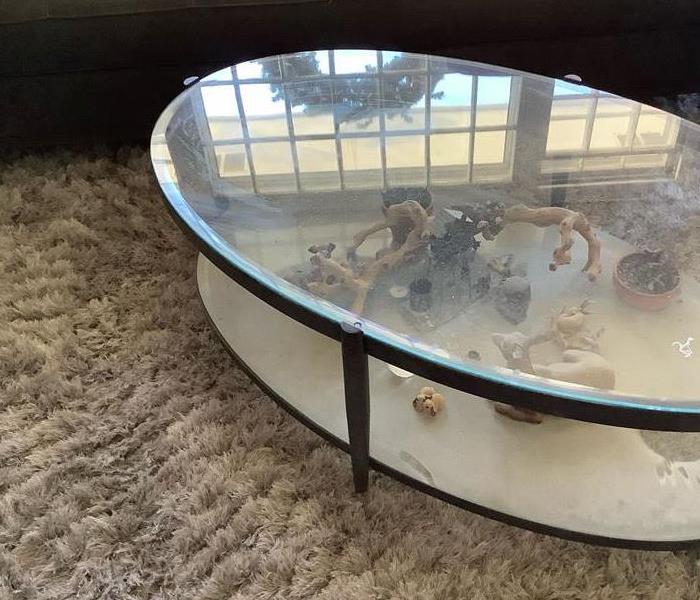 Coffee Table Affected by Soot
Coffee Table Affected by Soot
There are several factors to consider when cleaning contents affected by residue generated by a fire. What was the source of the fire (what has burned), what times were affected (furniture, dishes, paintings, ceramics, etc.), the temperature of the fire, and the length of time (dwell time) since the fire occurred?
The number one priority is personal safety. Indoor air quality is often affected by the fire results. Consider wearing gloves, respiratory protection, and disposable outerwear to prevent carrying soot to areas outside of the loss site. If you are displaced until mitigation is complete you may carry soot to your temporary residence. Remember to protect yourself and prevent spreading soot to other areas.
Sources are often considered "wet" (petroleum-based, plastics, vegetable cooking oil, or animal-based cooking oil.) This soot is often sticky and may stain contents. "Dry" soot is often plant-based, or cellulose-based. Examples include paper, wood, certain furniture components. These are often easier to remove from surfaces, and are less likely to stain. Both "wet' and "dry" soot may have a strong odor.
The longer the soot remains on surfaces the potential for damage increases. SERVPRO of Fayetteville provides emergency services to reduce damages to contents.
Content material affects how well an item will clean, deodorize and not retain a stain. Porous materials (fabric, books, paper, unfinished drywall, paintings) are more receptive to soot and may prove more difficult to mitigate. Semi-porous materials (unfinished wood, plastics) often respond better to cleaning. Non-porous materials (glass, ceramics, metals, sealed wood) respond to mitigation with the least amount of residual effects.
Contents are often removed (packed-out) from the affected structure to an off-site facility allowing more effective cleaning processes. SERVPRO of Fayetteville does utilize pack-out processes to ensure the best results.
Cleaning agents are an important aspect for successfully mitigating affected contents. SERVPRO of Fayetteville uses specific cleaning agents designed for the services provided which are EPA Registered.
Tip: Wear gloves when handling porous items to prevent staining the item. Your natural oils on your hands will set the stain in porous materials. Sometimes these stains are permanent.
 Are you left with the aftermath of floodwater damage? Don't hesitate to contact SERVPRO of Fayetteville. We want to help.
Are you left with the aftermath of floodwater damage? Don't hesitate to contact SERVPRO of Fayetteville. We want to help.

 24/7 Emergency Service
24/7 Emergency Service








